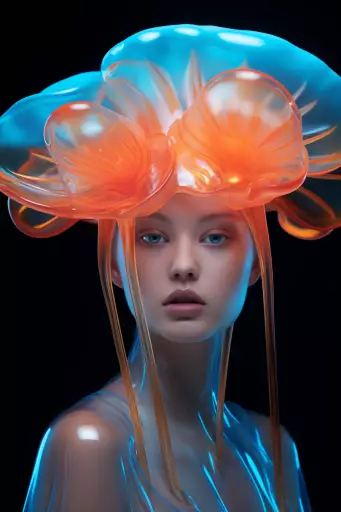Explore the Best AI Image Gallery

Beyond Pixels: How AI Image Creation Tools Are Reshaping the Creative Landscape
The realm of visual art has witnessed a seismic shift with the advent of artificial intelligence (AI) image creation tools. These sophisticated algorithms, capable of generating stunning and intricate images from text prompts, are revolutionizing how we create, consume, and interact with visual content. This burgeoning technology holds immense potential to empower artists, streamline design workflows, and redefine the very boundaries of creativity.
A New Arsenal for Artists and Designers
AI image generators offer a powerful new toolkit for artists and designers, expanding their creative horizons in unprecedented ways. Consider these applications:
- Concept Visualization: Artists can rapidly generate visual representations of their ideas, exploring various compositions, styles, and aesthetics before committing to a final piece.
- Style Transfer: AI algorithms can transfer the artistic style of one image onto another, allowing creators to experiment with different aesthetics or homage their favorite artists.
- Content Creation for Diverse Platforms: Generate high-quality visuals for websites, social media, marketing materials, and other platforms, saving time and resources.
- Personalized Art Experiences: Imagine creating unique artwork tailored to individual preferences, whether its a personalized portrait or a custom wallpaper based on your mood.
Beyond the Brushstrokes: AIs Impact on Industries
The influence of AI image creation extends far beyond the realm of fine art. Its applications are permeating various industries, including:
- Advertising and Marketing: Generate eye-catching visuals for campaigns, product mockups, and social media content.
- Gaming and Entertainment: Create immersive game environments, dynamic character designs, and stunning visual effects.
- Education and Research: Visualize complex data, illustrate scientific concepts, and create interactive learning experiences.
- Architecture and Design: Generate 3D models of buildings, explore design iterations, and create realistic visualizations of urban landscapes.
Navigating the Ethical Terrain
As with any powerful technology, AI image creation raises ethical considerations that require careful attention:
- Copyright and Ownership: Who owns the copyright to AI-generated images? The creator of the prompt, the developer of the algorithm, or the user who generated the image?
- Bias and Representation: AI algorithms are trained on vast datasets, which can inadvertently perpetuate existing biases. Its crucial to ensure that AI-generated imagery reflects diverse perspectives and avoids harmful stereotypes.
- Misinformation and Deepfakes: The ability to create realistic synthetic images raises concerns about the potential for misuse in spreading misinformation or creating convincing deepfakes.
Shaping the Future of Creativity
The future of AI image creation holds immense promise. We can expect:
- More Intuitive and User-Friendly Tools: AI generators will become increasingly accessible to a wider range of users, even those without technical expertise.
- Enhanced Realism and Detail: Continued advancements in AI algorithms will result in images with even greater realism and detail.
- Collaboration Between Humans and AI: Artists and designers will increasingly leverage AI as a creative partner, augmenting their own skills and exploring new possibilities.
Conclusion
AI image creation tools are transforming the creative landscape, offering exciting opportunities and challenges. By embracing ethical considerations and fostering responsible development, we can harness the power of AI to unlock new frontiers of creativity, empower artists, and shape a future where imagination knows no bounds.



![**Representation: A dog acting as a private tutor to a child. The dog holds a ruler in its paw and stands at the blackboard to explain a dog diagram to the child. Graphic style: Line drawing, cartoon style, influenced by Franco-Belgian comics, thick black lines, simplified design, vector, black and white only, in the style of Keith Haring or the French comic strip "Alinéa". [IMPORTANT]: A single continuous line extending from one side of the image to the other, minimalist, strong outlines, line drawing, without lifting the hand, ultra-simplified, no shading, entirely white image, drawing created in the center of a sheet of paper. --ar 16:5** - <@627984126871470085> (fast)](https://images.ai-img.art/thumbnails/150/7a854648a81e51241dcca8d24dd6e3bfcf07ad1df51baf401c9b729f4cf411fa.webp)

























](https://images.ai-img.art/thumbnails/150/157712d76865d557120f9baf988de3d0525225295a2789c89bf2c4a5a96a03d1.webp)





![**Representation: A dog acting as a private tutor to a child. The dog holds a ruler in its paw and stands at the blackboard to explain a dog diagram to the child. Graphic style: Line drawing, cartoon style, influenced by Franco-Belgian comics, thick black lines, simplified design, vector, black and white only, in the style of Keith Haring or the French comic strip "Alinéa". [IMPORTANT]: A single continuous line extending from one side of the image to the other, minimalist, strong outlines, line drawing, without lifting the hand, ultra-simplified, no shading, entirely white image, drawing created in the center of a sheet of paper. --ar 16:5** - Variations (Strong) by <@627984126871470085> (fast)](https://images.ai-img.art/thumbnails/150/f4e034998ccd869d8a061fd12017514fcd92210eb33d4222dc9b54716223f4dd.webp)
](https://images.ai-img.art/thumbnails/150/9d51c5e673b4f2068b7b01abc35425a06f173b76303adf9ad29ca14302c25b18.webp)
![**Representation: A teenager smiling while thinking about a friendly dog, a comic-style thought bubble with a friendly dog inside. Graphic style: Line drawing, cartoon style, influenced by Franco-Belgian comics, thick black lines, simplified design, vector, black and white only, in the style of Keith Haring or the French comic strip "Alinéa". [IMPORTANT]: A single continuous line extending from one side of the image to the other, minimalist, strong outlines, line drawing, without lifting the hand, ultra-simplified, no shading, entirely white image, drawing created in the center of a sheet of paper. --ar 16:5** - <@627984126871470085> (fast)](https://images.ai-img.art/thumbnails/150/6fc850f638e3dee0c4b121acecad2c8419e02bdeac7f871d625f1003c1c3abe1.webp)


](https://images.ai-img.art/thumbnails/150/51c93500396faff4e7fa8b42bc68033067b16b2230e3496e95c482a581ff0fe9.webp)



